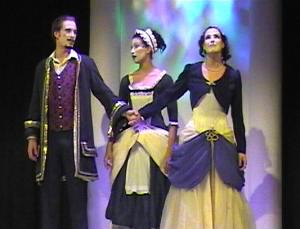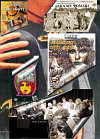Alexandria Virtual Cultural Centre of WA
TARTUFFE
|
THE WEST AUSTRALIAN, THURSDAY MAY 9 2002 Hypocrisy SkeweredTartuffe By Moliere In TARTUFFE the French playwright Moliere created one of the hypocritical monsters of all time...... .....It's a delicious setup as Moliere satirises hypocrisy and greed in 17th century France – at the same time revealing to a modern audience same that man's baser instincts remain pre much unchanged. Tartuffe has become a classic of French theatre, shaped by sparkling dialogue, clever plotting and sharp characterisations. Finalyear drama students at the WA Academy of Performing Arts tackle Moliere's rhyming couplet style of dialogue with a vigour and intensity that never lets up and dig deep into the play's sense of irony and absurdity.... .....Director Boris Radmilovich and his design team have come up with a heightened sense of style that emphasises the clownish elements ..... .....The young cast handle the dialogue with its rollicking rhythms with conviction, even if sometimes the pace is too fast. Rhyming couplets is never an easy style to master, and some of the cast do better than others. Mostly, though, this is a strong ensemble piece. Damien Robertson's Tartuffe is suitably vain and scheming, his bogus piety reinforced by his long black coat and the tiny cross that he twists between his fingers. ("Hang up my hairshirt," he shouts behind him as he makes his entrance, the first inkling of the man's breathtaking hypocrisy.) There are some lively encounters between members of Orgon's extended family and Tartuffe. Most delectable is Tartuffe's attempted seduction of Orgon's wife Elmire (Renee McIntosh) while her husband is in hiding. Some of the most vigorous performances come from the women, with Alexandria Steffensen's maid Dorine revealing the sharpest of the tongues of those who will not be deceived by Tartuffe's humbug. Karen Roberts, as the daughter who Orgon is determined to marry off to Tartuffe, steals her scenes with a natural gift for comedy. Roberts is also very funny when quarrelling with Valere (Paul Ashcroft), the young man with whom she is really in love. Classical drama rarely gets an airing on the theatre scene these days, but it is where actors can learn the basics of their craft and work with scripts that have stood the test of time. Tartuffe is a masterwork of satire, and the student cast bring out its qualities with enthusiasm and conviction. |
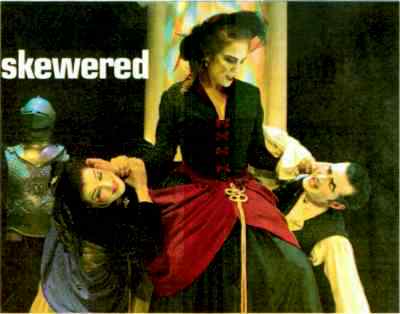 |
||||||||||||||||||||||||
|
Madame Pernelle (Amy Spruce) gives Mariane (Karen Roberts) and Damis (Phillip McInnes) an earbashing in Moliere's Tartuffe. |
|||||||||||||||||||||||||
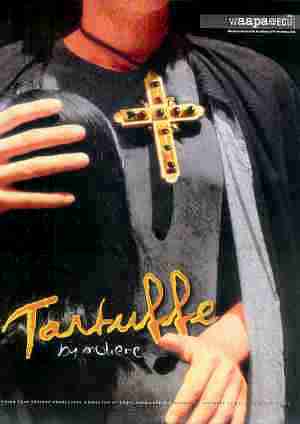 |
|||||||||||||||||||||||||
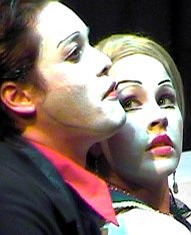 |
|||||||||||||||||||||||||
|
Elmire (Renee McIntosh) & Tartuffe (Damien Robertson) |
|||||||||||||||||||||||||
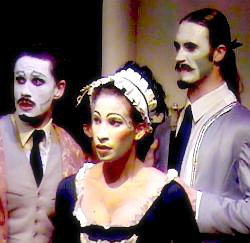 |
|||||||||||||||||||||||||
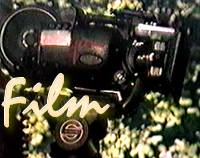 |
|||||||||||||||||||||||||
|
Cleante (Stephen Francis), Dorine (Alexandria Steffensen) & Orgon (Rhys James Rees) |
|||||||||||||||||||||||||
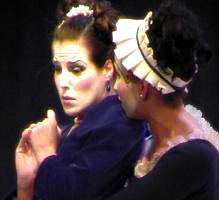 |
|||||||||||||||||||||||||
Mariane & Dorine
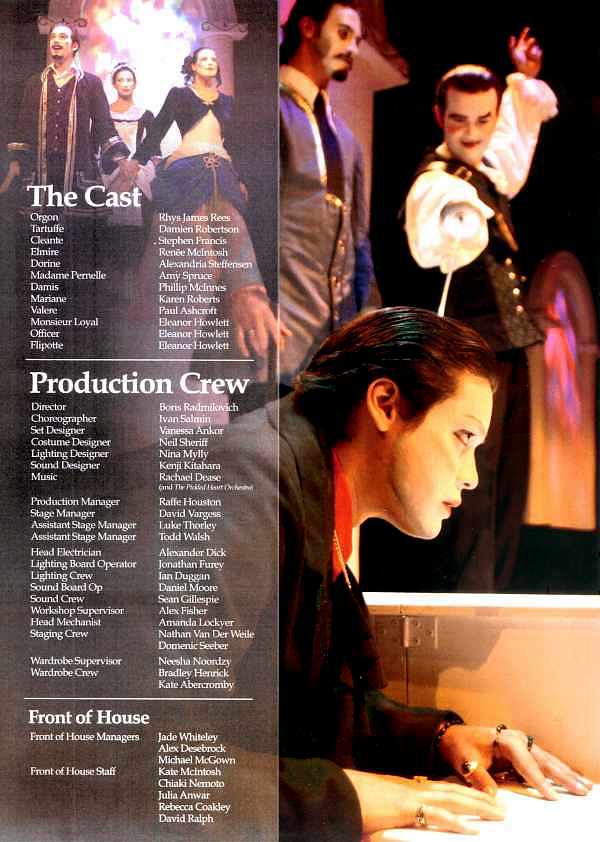
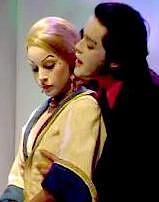

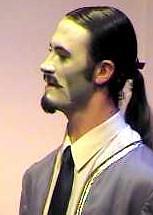
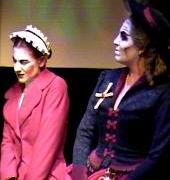
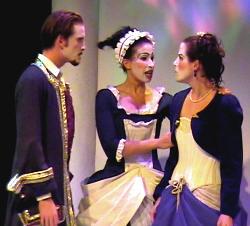 |
|||||||||||||||||||||||||||||||||||||||||||||||||||||||||||||||||||
Director's NotesThis production of Molière's Tartuffe comes as the result of collaborative research carried out by students of the third year Acting course, second and third year Design students, Production students (coming from a range of years, streams, and levels of training), the composer, choreographer and my self. Focus in research was on the correlation between distinctive actors and dramatic art practitioners which make a recognisable chain stretching from the times when Drama Art was for the first time recognised and articulated as an independent art form (over 2,500 years ago) until today. The major themes of exploration were: 1. Structural analysis: ie. given circumstances Molière, Aristotle, Artaud, Stanislavsky; The relevance of discoveries was checked through rehearsals and constituted a blueprint for improvisations. There are disputes and at least a few theories about who are the major practitioners and whose involvement is essential for live theatre performance but all of them consider audience as an integral element. My experience as actor is that the audience is undoubtedly active participant and shapes performance. I perceive that the major advantage of live theatre performance compared to other media employing dramatic art and actors (film, radio, TV) is in the immediacy of impact created by transitive actions and reactions between Actor/Character and Spectator. Spectators revisit live theatre performances in the clear understanding that each performance is a unique and genuine experience. The set design for this production is an attempt to allow and amplify the integration of stage and audience. Costume design is a combination of century and 1930s costume, suggesting some imaginary futuristic decadency and hopefully underlining its universal relevance. At the end, when Tartuffe season ends, away from spectators, we will analyse individual effort in research and application. The success of this production will be measured through the capacity to engage and playfully rebuild each night anew. With full respect and responsibility, mistakes and weaknesses will be clearly pointed out and used in the process of encouraging improvement, supporting openness and helping individual students in defining specific needs and future goals. Due to the obvious complexity of group dynamics, which is in the nature of any theatrical exploration we used all available resources, and I would like to express our deepest gratitude to all staff across the schools within WAAPA@ECU whose knowledge and support proved invaluable. Special thanks to Gillian Jones, for spending her private time in everlasting debate about didactics, theories, and the pragmatic aspects of acting studies. Now I will leave you to enjoy our study of passion, vanity and hypocrisy in the times of harsh religious (political, social…) intolerance. |
|||||||||||||||||||||||||||||||||||||||||||||||||||||||||||||||||||
|
Armistice: Valere (Paul Ashcroft), Dorine & Mariane |
|||||||||||||||||||||||||||||||||||||||||||||||||||||||||||||||||||
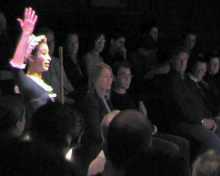 |
|||||||||||||||||||||||||||||||||||||||||||||||||||||||||||||||||||
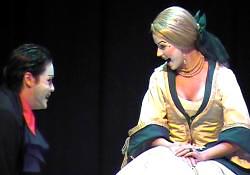 |
|||||||||||||||||||||||||||||||||||||||||||||||||||||||||||||||||||
|
Elmire & Tartuffe |
|||||||||||||||||||||||||||||||||||||||||||||||||||||||||||||||||||
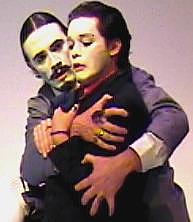 |
|||||||||||||||||||||||||||||||||||||||||||||||||||||||||||||||||||
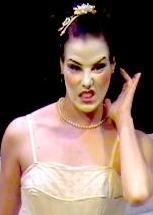 |
|||||||||||||||||||||||||||||||||||||||||||||||||||||||||||||||||||
|
Mariane |
|||||||||||||||||||||||||||||||||||||||||||||||||||||||||||||||||||
|
Best friends: Orgon & Tartuffe |
|||||||||||||||||||||||||||||||||||||||||||||||||||||||||||||||||||
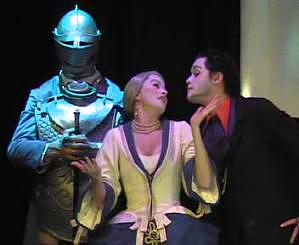 |
|||||||||||||||||||||||||||||||||||||||||||||||||||||||||||||||||||
|
Orgon,Elmire & Tartuffe |
|||||||||||||||||||||||||||||||||||||||||||||||||||||||||||||||||||
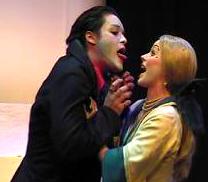 |
|||||||||||||||||||||||||||||||||||||||||||||||||||||||||||||||||||
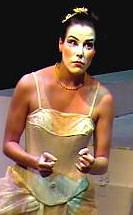 |
|||||||||||||||||||||||||||||||||||||||||||||||||||||||||||||||||||
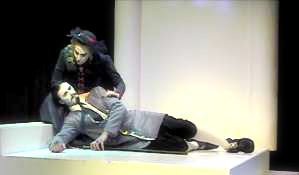 |
|||||||||||||||||||||||||||||||||||||||||||||||||||||||||||||||||||
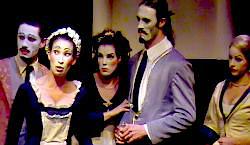 |
|||||||||||||||||||||||||||||||||||||||||||||||||||||||||||||||||||
|
Mother & son: Madame Pernelle & Orgon |
|||||||||||||||||||||||||||||||||||||||||||||||||||||||||||||||||||
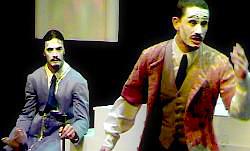 |
|||||||||||||||||||||||||||||||||||||||||||||||||||||||||||||||||||
|
Cleante, Dorine, Mariane & Orgon |
|||||||||||||||||||||||||||||||||||||||||||||||||||||||||||||||||||
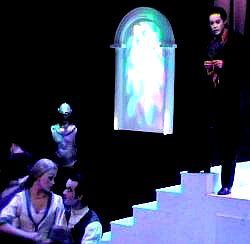 |
|||||||||||||||||||||||||||||||||||||||||||||||||||||||||||||||||||
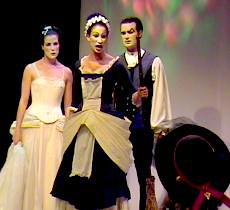 |
|||||||||||||||||||||||||||||||||||||||||||||||||||||||||||||||||||
|
Orgon & Cleante |
|||||||||||||||||||||||||||||||||||||||||||||||||||||||||||||||||||
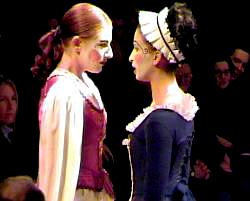 |
|||||||||||||||||||||||||||||||||||||||||||||||||||||||||||||||||||
|
Elmire, Damis & Tartuffe |
|||||||||||||||||||||||||||||||||||||||||||||||||||||||||||||||||||
|
Generation gap skewered: Mariane, Dorine, Damis & Madame Pernelle |
|||||||||||||||||||||||||||||||||||||||||||||||||||||||||||||||||||
|
Witch-hunt:: Monsieur Loyal & Dorine |
|||||||||||||||||||||||||||||||||||||||||||||||||||||||||||||||||||
|
ABC Radio - Perth Interview with Boris Radmilovich about the “Tartuffe” production |
|||||||||||||||||||||||||||||||||||||||||||||||||||||||||||||||||||
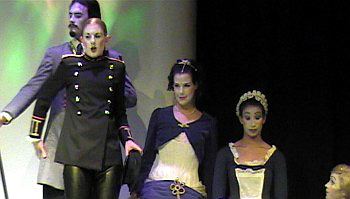 |
|||||||||||||||||||||||||||||||||||||||||||||||||||||||||||||||||||
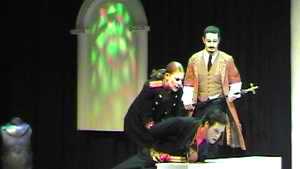 |
|||||||||||||||||||||||||||||||||||||||||||||||||||||||||||||||||||
|
Justice in action:Officer (Eleanor Howlett), Cleante & Tartuffe |
|||||||||||||||||||||||||||||||||||||||||||||||||||||||||||||||||||
|
Orgon, Officer, Dorine, Mariane & Elmire |
|||||||||||||||||||||||||||||||||||||||||||||||||||||||||||||||||||
Valere Dorine & Mariane
Virtual Cultural Centre of WA
Alexandria - Acting on the brighter future for the professional arts in Australia
